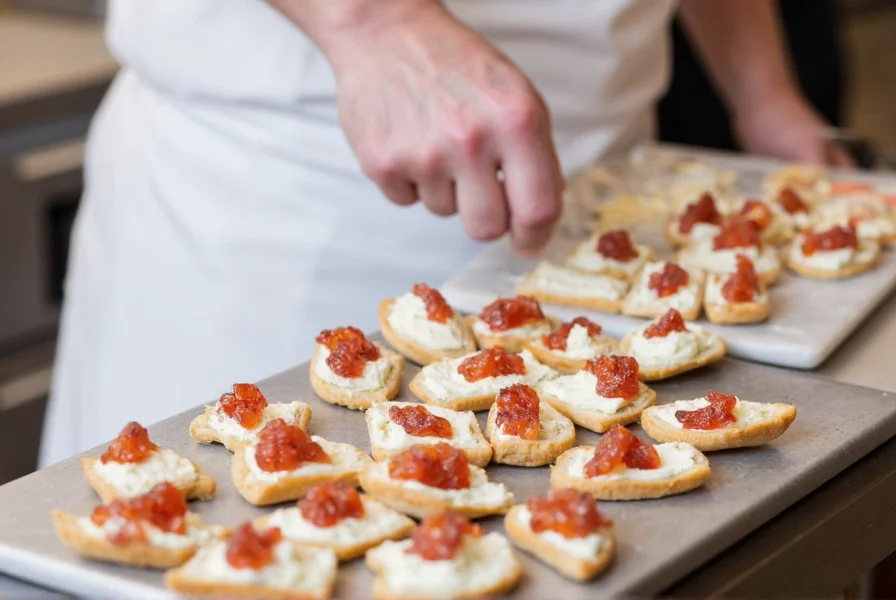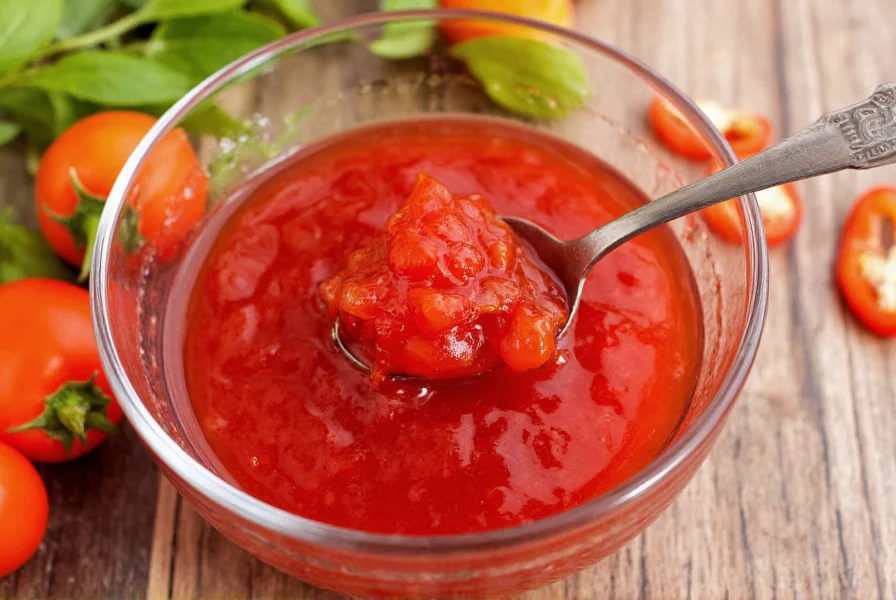Understanding how to properly use this vibrant condiment can transform ordinary dishes into extraordinary culinary experiences. Unlike regular fruit jellies, pepper jelly incorporates the natural capsaicin from peppers, creating a unique flavor profile that ranges from mildly sweet to intensely spicy depending on the pepper variety used.
The Essential Guide to Pepper Jelly: From Basics to Brilliant Pairings
Pepper jelly has evolved from a simple Southern specialty to a globally appreciated condiment that adds complexity to both casual and gourmet dishes. This versatile preserve combines the natural sweetness of sugar with the fiery kick of various peppers, creating a balance that enhances rather than overwhelms other flavors.
Pepper Varieties That Define Flavor Profiles
The magic of pepper jelly begins with pepper selection. Different peppers create dramatically different end products:
| Pepper Type | Scoville Heat Units | Flavor Profile | Best Jelly Applications |
|---|---|---|---|
| Bell Peppers | 0 SHU | Sweet, vegetal | Mild jellies for children, colorful presentations |
| Jalapeños | 2,500-8,000 SHU | Grassy, bright heat | Cream cheese pairings, sandwich spreads |
| Habaneros | 100,000-350,000 SHU | Tropical fruit, intense heat | Glazes, bold dipping sauces |
| Thai Bird's Eye | 50,000-100,000 SHU | Sharp, immediate heat | Asian-inspired dishes, marinades |
Professional chefs often blend multiple pepper varieties to create complex pepper jelly recipes that offer layered heat experiences. The most successful commercial pepper jelly products typically use a 3:1 ratio of sweet bell peppers to hotter varieties, allowing the heat to develop gradually on the palate.

Mastering Pepper Jelly Preparation
Creating restaurant-quality pepper jelly at home requires attention to several critical factors. The熬制 process must maintain precise temperature control—typically between 215-220°F—to properly activate pectin while preserving the volatile flavor compounds in the peppers.
Food scientists have determined that vinegar content between 0.5-1.0% creates the ideal pH balance (3.2-3.6) for both flavor development and safe canning. This scientific approach to homemade pepper jelly canning instructions ensures both safety and optimal texture.
Transformative Culinary Applications
Understanding how to use pepper jelly with cream cheese represents just the beginning of its culinary potential. This versatile condiment serves multiple functions in professional kitchens:
- As a glaze: Brush on proteins during the final 5 minutes of cooking—perfect for pepper jelly as a glaze for meats like pork tenderloin or salmon
- In dressings: Whisk with olive oil and vinegar for vibrant salad dressings
- As a dip base: Combine with softened cream cheese for the classic Southern appetizer
- In sandwiches: Adds moisture and flavor complexity to turkey, ham, or grilled cheese
- With cheese boards: Creates a sweet-heat counterpoint to aged cheddar and blue cheeses
Professional chefs recommend chilling pepper jelly for 24 hours before serving to allow flavors to fully meld. This simple step dramatically improves the depth of flavor in any pepper jelly pairing suggestions.

Storage Guidelines for Maximum Freshness
Properly processed and sealed pepper jelly maintains quality for 18-24 months in pantry storage. Once opened, refrigeration extends freshness to 6-8 months. The high sugar content acts as a natural preservative, but proper canning techniques remain essential for food safety.
When evaluating commercial products, check for consistent texture without separation—quality pepper jelly should have uniform clarity with visible pepper pieces suspended throughout. Avoid products with crystallized sugar or cloudy appearance, which indicate improper熬制 or storage.
Expert Pairing Recommendations
Developing sophisticated pepper jelly pairing suggestions requires understanding flavor chemistry. The capsaicin in peppers binds with fats, making dairy products ideal companions. Consider these professional pairing strategies:
- Cheese pairings: Balance medium-heat jelly with sharp cheddar or goat cheese
- Breakfast applications: Spread on cream cheese bagels or swirl into yogurt
- Cocktail integration: Mix with bourbon for sophisticated glazes or sauces
- International fusion: Use in Asian-inspired dishes as a sweet-heat component
For those exploring best pepper jelly recipes for appetizers, consider creating layered dips with cream cheese, pepper jelly, and bacon. The combination of salty, creamy, and sweet-spicy elements creates a crowd-pleasing appetizer that works for both casual gatherings and formal events.
Frequently Asked Questions
What's the difference between pepper jelly and pepper jam?
Pepper jelly uses extracted juice for a clear, firm set, while pepper jam includes solid fruit pieces for a thicker, textured spread. Jelly requires precise pectin measurement for proper setting, whereas jam relies on natural fruit pectin.
How can I reduce the heat level in homemade pepper jelly?
Remove pepper seeds and membranes before熬制, as these contain most capsaicin. You can also increase the sugar-to-pepper ratio or add sweet bell peppers to dilute heat. For immediate heat reduction, add a small amount of acid like lemon juice during cooking.
Can I substitute pepper jelly in recipes calling for regular jelly?
Yes, but consider the heat factor. Pepper jelly works well in savory applications like meat glazes or cheese pairings, but may overwhelm desserts. For best results in substitution, use mild pepper varieties and adjust quantities based on desired heat level.
What are the signs that pepper jelly has gone bad?
Discard pepper jelly showing mold, significant color change, unpleasant odor, or bubbling/fermentation signs. Properly sealed jars should have concave lids; if the lid bulges or makes a popping sound when opened, the product is compromised and should not be consumed.











 浙公网安备
33010002000092号
浙公网安备
33010002000092号 浙B2-20120091-4
浙B2-20120091-4